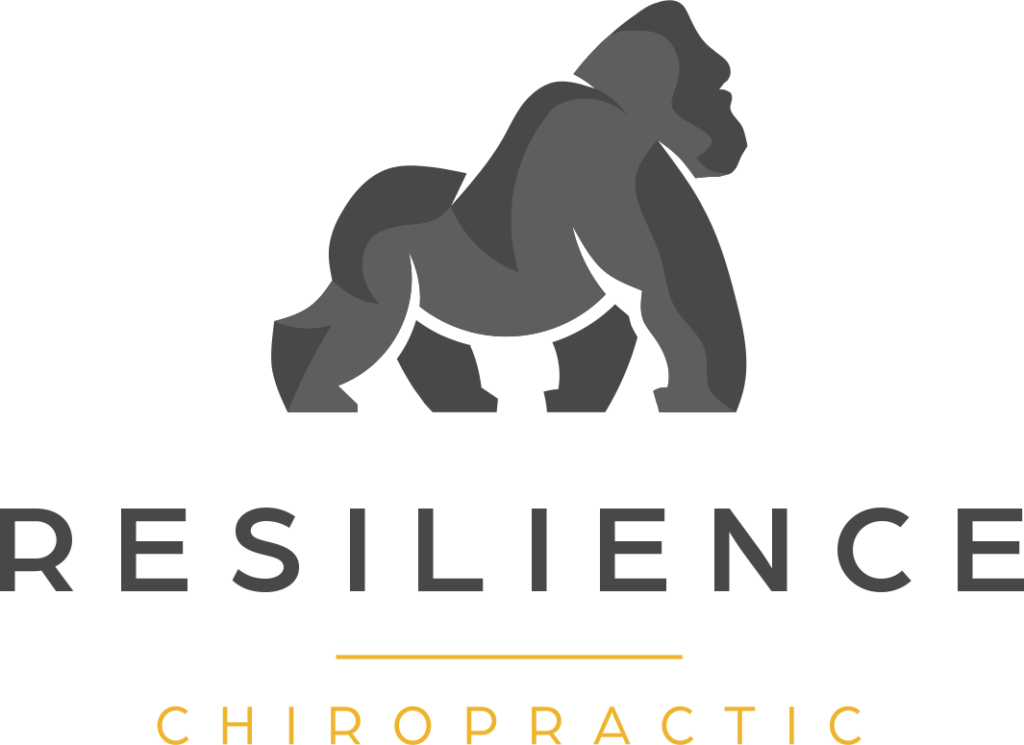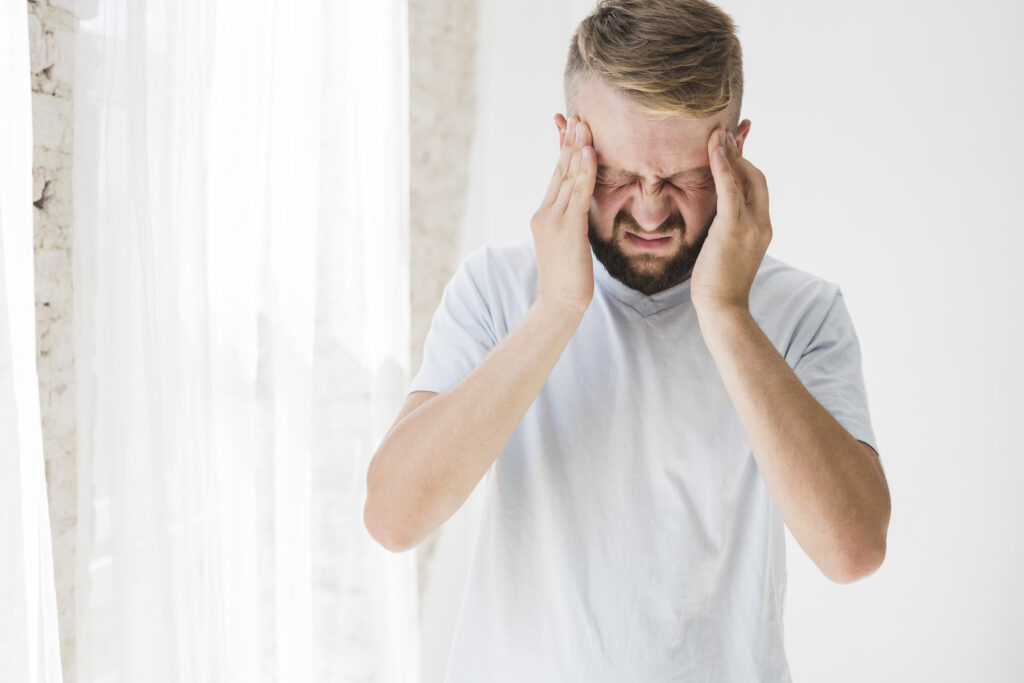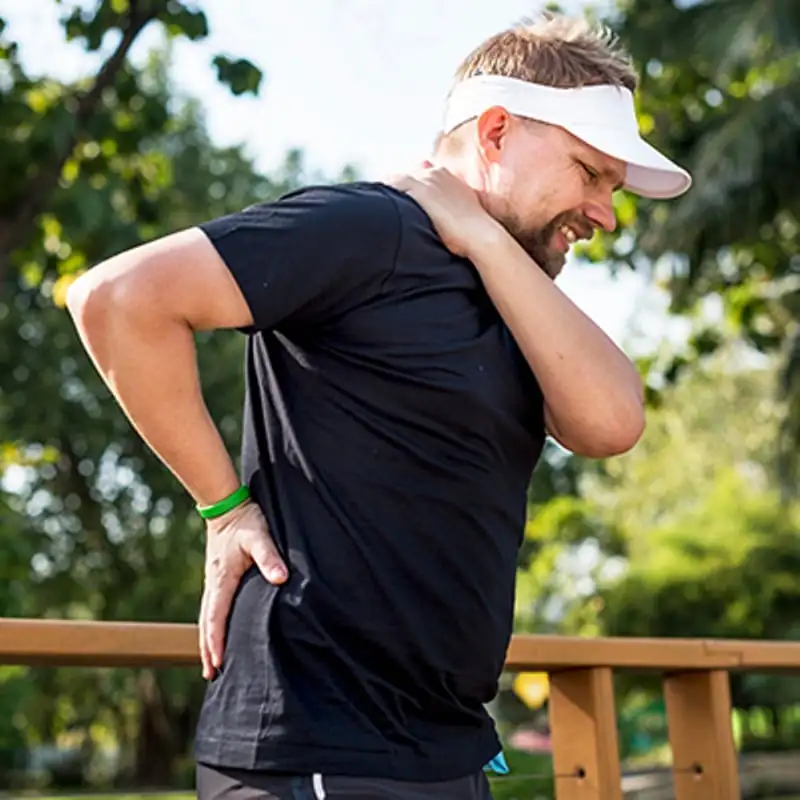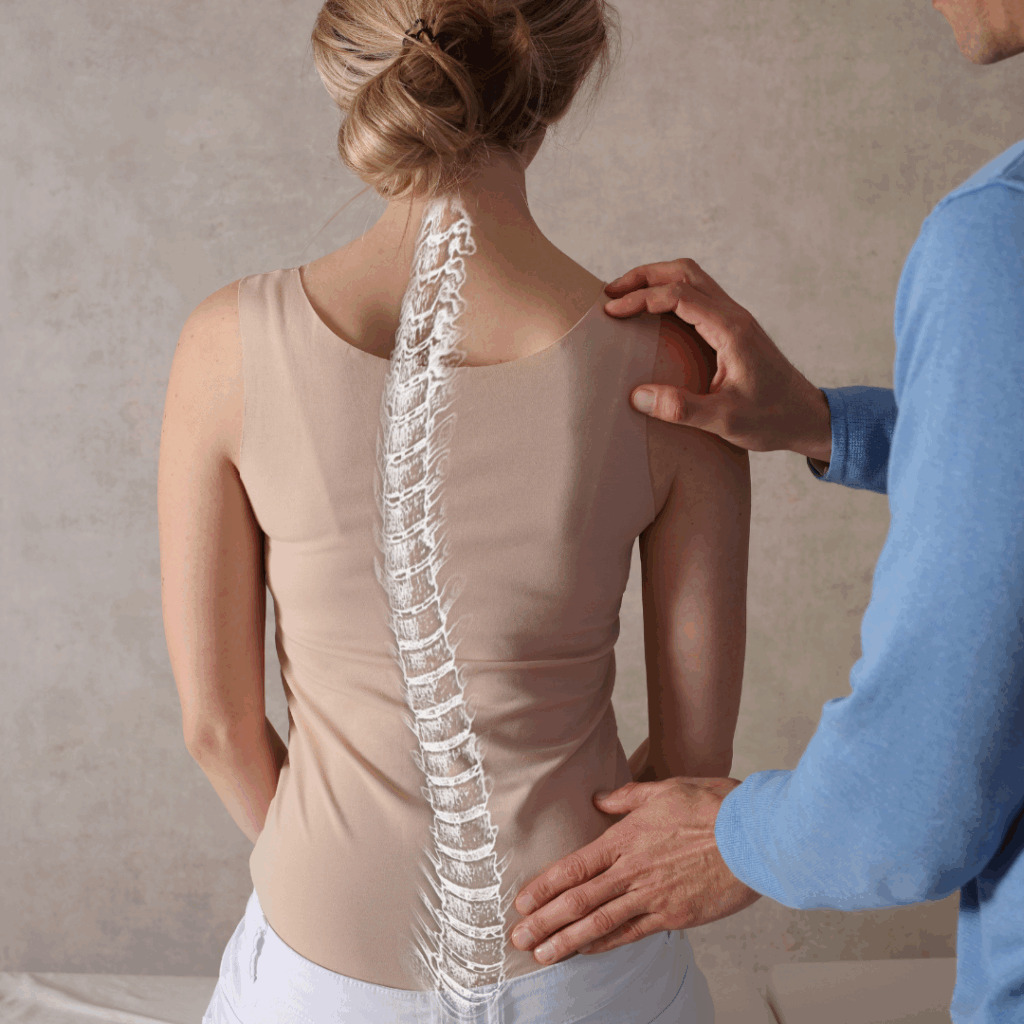As a local chiropractor, I understand that lower back pain can be daunting, especially when you're unsure about the best ways to find relief. It's important to recognize that a holistic approach can be incredibly beneficial. This includes not only maintaining good ergonomic practices but also engaging in targeted exercises and exploring various natural therapeutic methods. By identifying the root causes of your discomfort and implementing effective strategies, we can work together to enhance your comfort and mobility.
You might be wondering what specific solutions can help you in your unique situation. Let's delve into some practical steps you can easily integrate into your daily routine. From chiropractic adjustments to stretches and strengthening exercises tailored to your needs, I'm here to guide you on your journey toward recovery and well-being. Together, we can alleviate your pain and improve your quality of life through natural healing methods.
Understanding Lower Back Pain
As a local chiropractor, I often see patients who are experiencing lower back pain, and I want to help you understand this common issue. Lower back pain can strike unexpectedly, impacting your everyday life. You might find that reaching for an item, twisting your body awkwardly, or simply sitting for an extended period can trigger a sharp pain in your lower back. By understanding the underlying causes and types of lower back pain, you can take proactive steps toward finding relief.
There are many reasons your lower back may hurt. Common culprits include muscle strains, ligament sprains, or even herniated discs. Additionally, poor posture—whether you're sitting or standing—can put unnecessary stress on your back, leading to discomfort. You may also experience pain from conditions such as arthritis or sciatica, where nerve pressure can cause discomfort that radiates down your legs.
It's also important to recognize that emotional stress can contribute to your physical pain. When you're stressed, your body may tense up, resulting in muscle tightness and discomfort. If you ignore these signals, what starts as a minor ache can escalate into a more serious issue over time.
Understanding the characteristics of your pain is crucial. Is it sharp, dull, or throbbing? Does it improve with movement or worsen with activity? Paying attention to these details can help you understand your condition better and communicate effectively with me and other healthcare professionals.
At our chiropractic office, we focus on natural healing and empowering you to take charge of your health. Together, we can explore various treatment options tailored to your needs, helping you find relief from lower back pain and regain your quality of life.
Stretching and Strengthening Exercises
As a local chiropractor, I want to emphasize the importance of incorporating stretching and strengthening exercises into your routine to effectively combat lower back pain. Many patients may not realize how crucial these practices are for maintaining a healthy spine.
By learning key stretching techniques, you can enhance your flexibility, which is essential for overall mobility and pain relief. Additionally, engaging in specific strengthening exercises can provide vital support to your spine, helping to alleviate discomfort and prevent future issues.
Let's dive into how these exercises can truly transform your daily life. You'll find that dedicating even a few minutes each day to these activities can lead to significant improvements in your back health and overall well-being.
Key Stretching Techniques
As a local chiropractor, I often see patients seeking relief from lower back pain, and I want to share some key stretching techniques that can greatly enhance your comfort and mobility.
These stretches are simple yet effective, and they can easily be integrated into your daily routine.
First, let's talk about the cat-cow stretch. This exercise is fantastic for mobilizing your spine. Start by getting on all fours. As you inhale, arch your back upwards (this is the cat position), and as you exhale, dip your back downwards (the cow position).
Repeat this sequence for several breaths; it's a gentle way to warm up your spine.
Next, consider the seated forward bend. Sit on the floor with your legs extended in front of you. With a straight spine, reach for your toes. This stretch focuses on your hamstrings and lower back, offering a soothing release.
Hold this position for 15-30 seconds while taking deep breaths.
Another effective stretch is the child's pose. Begin by kneeling, then sit back on your heels and extend your arms forward onto the ground. This position is excellent for relaxing your spine and hips, helping to release built-up tension.
Don't forget about the piriformis stretch as well. Lie on your back, cross one leg over the other, and gently pull your knee towards your chest. This stretch targets tightness in your glutes and lower back, providing much-needed relief.
Incorporating these stretches into your daily routine can lead to improved flexibility and reduced discomfort.
Always remember to listen to your body and avoid pushing into any pain. If you have any questions or need further guidance, feel free to reach out during your next visit!
Essential Strengthening Moves
As a local chiropractor, I want to emphasize the importance of incorporating essential strengthening exercises into your routine to enhance lower back stability and promote overall spinal health.
These exercises target crucial muscle groups that support your spine, helping to reduce the risk of injury and alleviate discomfort.
Let's start with pelvic tilts. To perform this exercise, lie on your back with your knees bent. Gently rock your pelvis upward while engaging your core muscles. Hold this position for a few seconds before releasing. This simple movement can significantly help in stabilizing your lower back.
Next, I encourage you to try bridges. While lying on your back, lift your hips towards the ceiling, squeezing your glutes as you do so. This exercise not only strengthens your lower back but also engages your glute muscles, which are vital for maintaining proper posture.
Another effective exercise is the plank. Position yourself on your forearms and toes, ensuring your body remains straight. Aim to hold this position for 20 to 30 seconds, gradually increasing the duration as your strength improves. Planks are excellent for building core stability, which is essential for a healthy spine.
Lastly, include bird-dogs in your routine. Start on all fours, then extend one arm forward while extending the opposite leg back, keeping your core tight throughout the movement. Alternate sides to enhance your stability and coordination.
I recommend incorporating these exercises into your weekly routine, aiming for two to three sessions each week.
By doing so, you'll not only strengthen your lower back but also improve your overall posture and balance, contributing to your long-term health and well-being.
Proper Posture Techniques
As a local chiropractor, I want to emphasize the importance of proper posture in relieving lower back pain. Many people may not realize that the way you hold your body throughout the day can significantly impact your comfort and overall well-being.
Whether you're sitting at a desk or standing for extended periods, creating an ergonomic workspace is crucial.
By adjusting your posture, you can support your spine and reduce strain on your lower back. Simple changes, such as using a chair that promotes a natural curve in your back or ensuring your feet are flat on the ground, can make a world of difference.
I encourage you to pay attention to how you position your body during daily activities, as this awareness can lead to lasting improvements in your health.
Let's work together to ensure you feel more comfortable and supported in your daily life!
Ergonomic Workspace Setup
As a local chiropractor, I want to emphasize the importance of creating an ergonomic workspace to support your overall health, especially when it comes to maintaining proper posture and mitigating the risk of lower back pain.
It's crucial to start with your chair; ensure that it allows your feet to rest flat on the floor, with your knees positioned at a 90-degree angle. A chair featuring lumbar support is beneficial as it helps maintain the natural curve of your spine, which is vital for spinal health.
Next, let's talk about your computer monitor. Position it at eye level and about an arm's length away to prevent unnecessary strain on your neck. If you frequently use a keyboard and mouse, keep them within easy reach so your elbows stay close to your sides, also forming a 90-degree angle. This alignment is key in minimizing shoulder strain while you work.
If your feet don't touch the ground, I recommend using a footrest for added support. You might also consider placing a small cushion behind your lower back; this can provide extra comfort and support throughout the day.
Remember to take regular breaks to stand, stretch, and walk around. These movements help keep your muscles active and can prevent stiffness, which is essential for maintaining mobility and comfort.
Lastly, ensure your workspace is well-lit to reduce eye strain. By following these ergonomic guidelines, you can significantly improve your posture and comfort, which in turn helps reduce the likelihood of experiencing lower back pain during your work hours.
If you have any concerns about your posture or back pain, don't hesitate to reach out for a consultation. Your spinal health is important, and I'm here to help you achieve it!
Sitting vs. Standing Posture
As a chiropractor, I want to emphasize the importance of maintaining proper posture to help prevent lower back pain, whether you're sitting or standing.
When you find yourself seated, ensure that your feet are flat on the floor and that your knees form a 90-degree angle. It's crucial to keep your back straight and your shoulders relaxed. You may need to adjust your chair to provide adequate support for your lower back; using a cushion can also be beneficial. Make sure your screen is positioned at eye level to prevent unnecessary strain on your neck.
Equally important is your standing posture. Be mindful to distribute your weight evenly between both feet and avoid locking your knees, as this can lead to discomfort. Engaging your core muscles will help support your spine while you stand. Keep your shoulders back and align your head directly over your spine.
If you need to stand for extended periods, using a footrest can help you shift your weight and provide some relief.
Remember, switching between sitting and standing throughout your day is a great way to alleviate stress on your back. I recommend changing positions every 30 to 60 minutes.
Heat and Cold Therapy
As a local chiropractor, I want to share how heat and cold therapy can be valuable tools in managing lower back pain. Understanding how to properly use these techniques can empower you to find relief and support your healing journey.
Let's start with heat therapy. Applying warmth to your lower back can help relax tight muscles and enhance blood circulation to the affected area. You can use a heating pad, a hot water bottle, or even enjoy a soothing warm bath.
Just remember, moderation is key—limit your use of heat to about 15 to 20 minutes at a time. If you're experiencing muscle stiffness or chronic pain, heat therapy can be especially beneficial and can complement your chiropractic care.
On the flip side, cold therapy is fantastic for addressing inflammation and numbing sharp pain. You might consider using ice packs or even a bag of frozen vegetables wrapped in a cloth.
Apply the cold compress to your lower back for 15 to 20 minutes, allowing breaks in between applications. Cold therapy is particularly effective right after a strain or injury, as it helps minimize swelling and provides immediate relief.
Incorporating these therapies into your routine can enhance your recovery and overall comfort.
Always feel free to reach out with any questions about how these methods can fit into your chiropractic care plan!
Over-the-Counter Medications
As a local chiropractor, I want to help you understand how managing lower back pain can be approached holistically, incorporating over-the-counter medications as a part of your care plan. While these medications can provide quick relief, it's essential to consider their role alongside chiropractic treatment for a more comprehensive approach to healing.
Many individuals find relief through nonsteroidal anti-inflammatory drugs (NSAIDs) like ibuprofen and naproxen. These medications work effectively to reduce pain and swelling, allowing you to engage in your daily activities with greater ease. However, I encourage you to adhere strictly to the recommended dosages, as exceeding these can lead to unwanted side effects such as stomach issues or increased cardiovascular risks.
Additionally, acetaminophen can be a viable option for managing pain. It may not possess anti-inflammatory properties, but it can be beneficial for those who may experience sensitivity to NSAIDs. Always remember to follow the dosage guidelines to avoid complications.
Topical analgesics, such as creams or patches containing menthol or capsaicin, are also worth considering. These products can be applied directly to the painful area on your skin, providing localized relief without the systemic effects that oral medications might carry.
While over-the-counter options can be helpful, it's crucial to remember that they aren't a substitute for professional care. If your pain continues despite using these medications, I encourage you to reach out to me or another healthcare professional.
We can assess your condition, identify any underlying issues contributing to your discomfort, and create a personalized treatment plan that may include chiropractic adjustments, exercises, and natural healing methods to promote long-term relief and wellness. Your journey to a pain-free life can be supported through a combination of medication and holistic care.
Physical Therapy Options
Incorporating chiropractic care into your lower back pain management plan can significantly enhance your path to recovery. As a local chiropractor, I focus on assessing your condition to identify the underlying causes of your pain and developing a personalized treatment plan tailored to your needs.
Our journey typically begins with a thorough evaluation, which includes assessing your spinal alignment, range of motion, and a review of your medical history.
Once I've a clear understanding of your specific situation, I'll guide you through targeted chiropractic adjustments designed to realign your spine, improve your posture, and alleviate discomfort. These adjustments not only help relieve pain but also play a crucial role in preventing future issues by promoting proper spinal health.
Additionally, we may incorporate exercises that mimic daily activities, making it easier for you to return to your normal routine.
Alongside adjustments, I may utilize various techniques such as soft tissue therapy, heat or cold therapy, and ultrasound therapy to further ease your discomfort. These methods can help promote circulation, reduce inflammation, and facilitate healing in the affected areas.
Consistency is essential when it comes to chiropractic care. Regular visits and adherence to any home exercises or recommendations I provide will maximize your results.
It's important to maintain open communication with me about your progress and any challenges you encounter during your recovery journey. By actively engaging in chiropractic care, you'll empower yourself to take control of your lower back pain and work towards a healthier, more active lifestyle.
Alternative Therapies
As a local chiropractor, I want to share some insights on how alternative therapies can offer relief from lower back pain. Many of my patients come to me seeking natural healing options that complement traditional treatments, and I'm here to guide you through those choices.
One of the most effective therapies I recommend is acupuncture. This ancient technique involves the insertion of thin needles into specific points on your body. It's known for helping to alleviate pain, and many of my patients have reported significant improvements in their back pain after just a few sessions.
Acupuncture promotes the release of endorphins and enhances blood flow, which can contribute to a quicker recovery.
Chiropractic care itself is a powerful alternative approach. My focus is on spinal alignment, which is crucial for relieving tension in your lower back. Through precise adjustments, I can help alleviate your immediate pain and support your overall spinal health.
Regular visits can lead to long-term benefits, ensuring that your back remains strong and resilient.
Massage therapy is another avenue worth exploring. Therapeutic massage can effectively relax tight muscles, reduce inflammation, and improve circulation in your back. Many of my patients find that incorporating regular massage sessions into their wellness routine significantly enhances their quality of life and helps manage their back pain.
Additionally, herbal remedies and dietary supplements have become increasingly popular among those looking for natural pain relief. Ingredients such as turmeric and ginger are known for their anti-inflammatory properties.
However, it's essential to consult with a healthcare professional—like myself—before starting any new supplement regimen to ensure it's safe and appropriate for your individual needs.
Finally, I often recommend practices like yoga and tai chi. These gentle movements and stretches not only promote flexibility and strength in your back but also help reduce stress, which can be a contributing factor to pain.
Integrating these practices into your daily routine can lead to significant improvements in your overall well-being.
If you're struggling with lower back pain, I encourage you to explore these alternative therapies alongside chiropractic care. Together, we can create a personalized plan that supports your healing journey.
Lifestyle Modifications
As a local chiropractor dedicated to helping you understand natural healing, I want to share how small lifestyle modifications can significantly alleviate your lower back pain. One of the first things to consider is your posture. Whether you're sitting, standing, or lifting, keeping your spine in a neutral position is crucial. This helps reduce unnecessary strain on your back.
If you spend long hours at a desk, investing in ergonomic furniture can make a world of difference. Make sure your chair and monitor are adjusted correctly to avoid slouching or leaning forward.
Incorporating regular physical activity into your daily routine is another essential step. Low-impact exercises such as walking, swimming, or yoga can strengthen your core and improve flexibility, ultimately providing better support for your back. Aim for at least 30 minutes of activity most days, but always listen to your body and avoid pushing yourself too hard.
Weight management is also key. Carrying excess weight can add extra stress to your lower back. If you find yourself overweight, even modest weight loss can lead to significant relief from pain. Focus on a balanced diet rich in fruits, vegetables, lean proteins, and whole grains to help manage your weight effectively.
Lastly, don't underestimate the importance of good sleep hygiene. Ensure your mattress provides proper support for your spine, and consider sleeping on your side with a pillow between your knees to maintain spinal alignment.
These adjustments can enhance your sleep quality, which is vital for recovery and managing pain. By making these lifestyle changes, you can take proactive steps towards better back health and overall well-being.
If you have any questions or need personalized advice, feel free to reach out – I'm here to help!
When to Seek Medical Help
As a local chiropractor, I want to emphasize the importance of recognizing when it's time to seek professional help for your lower back pain. While many people can manage mild discomfort at home, there are certain symptoms that indicate it's best to consult a healthcare provider, especially someone with expertise in chiropractic care and natural healing.
If your pain lingers for more than a few weeks, it's crucial to reach out to a chiropractor. Prolonged pain can be a sign of an underlying issue that may respond well to non-invasive treatments like spinal adjustments or therapeutic exercises.
It's also important to pay attention to how your pain manifests. If you experience pain that radiates down your legs, particularly if it's accompanied by numbness or tingling, this could indicate nerve involvement. Seeking help at this point can lead to effective solutions that address the root cause of your discomfort.
If you find yourself dealing with sudden, severe pain that disrupts your daily life or if it occurs after an injury, such as a fall or an accident, don't hesitate to contact us. We can assess your condition and provide the appropriate care.
Additionally, be mindful of other concerning symptoms. Signs like bowel or bladder dysfunction, unexplained weight loss, or fever accompanying your back pain are red flags that warrant immediate attention. These symptoms may indicate a more serious issue, and prompt evaluation is essential.
Lastly, if you've tried over-the-counter medications or home remedies without relief, it's time to consult a chiropractor. We can offer personalized treatment plans tailored to your unique needs and may refer you to a specialist if necessary.
Conclusion
As a local chiropractor, I want to share how incorporating some key solutions for lower back pain relief can significantly improve your daily life. First and foremost, focusing on proper posture is essential; it can prevent strain on your back and promote overall spinal health. Engaging in targeted exercises tailored to strengthen your core and back muscles is another effective strategy I often recommend.
Additionally, heat or cold therapy can provide immediate relief by reducing inflammation and promoting blood flow to the affected area. Lifestyle modifications, such as maintaining a healthy weight and ensuring ergonomic workspaces, are crucial in preventing future issues.
I also encourage my patients to explore professional options like chiropractic care, which can help address the root causes of your pain and promote natural healing. If your pain continues, please don't hesitate to reach out for a consultation. Remember, taking proactive steps today with the guidance of a chiropractor can lead you to a healthier and pain-free tomorrow!



